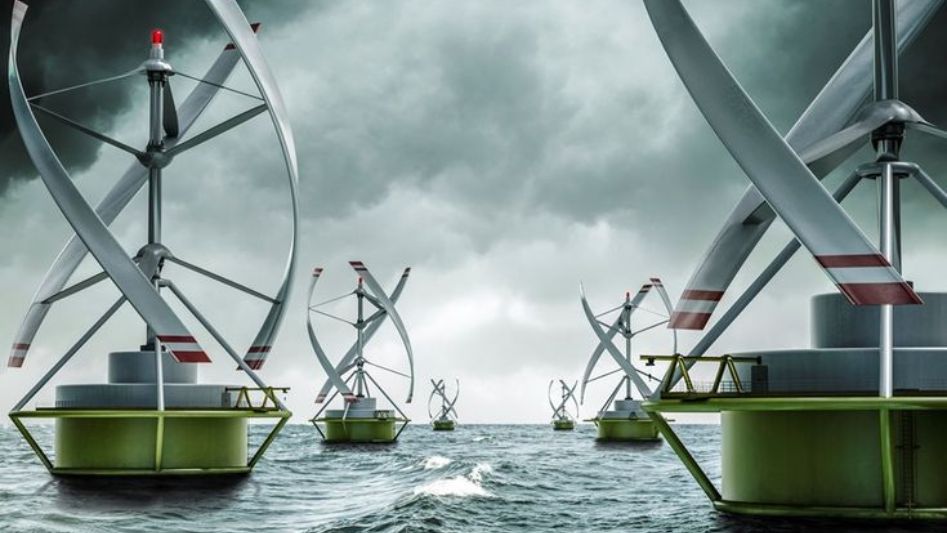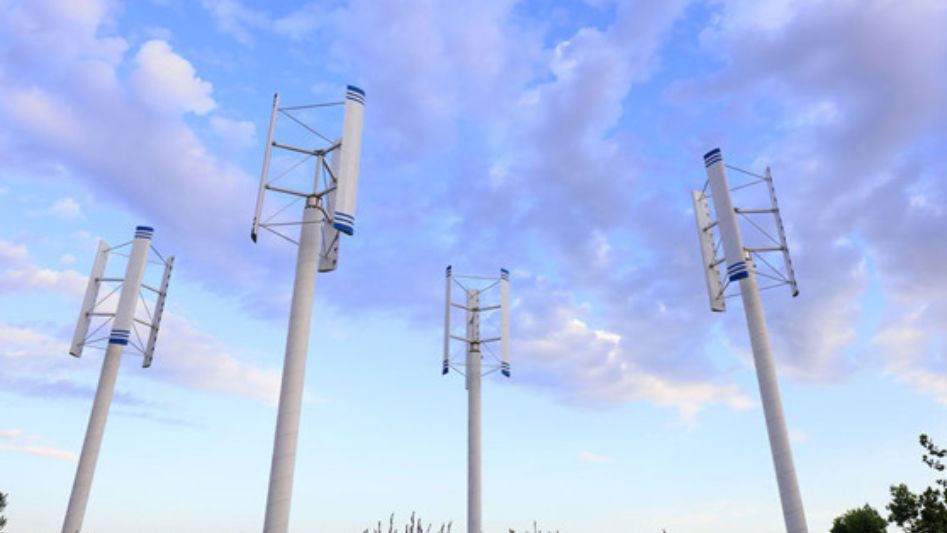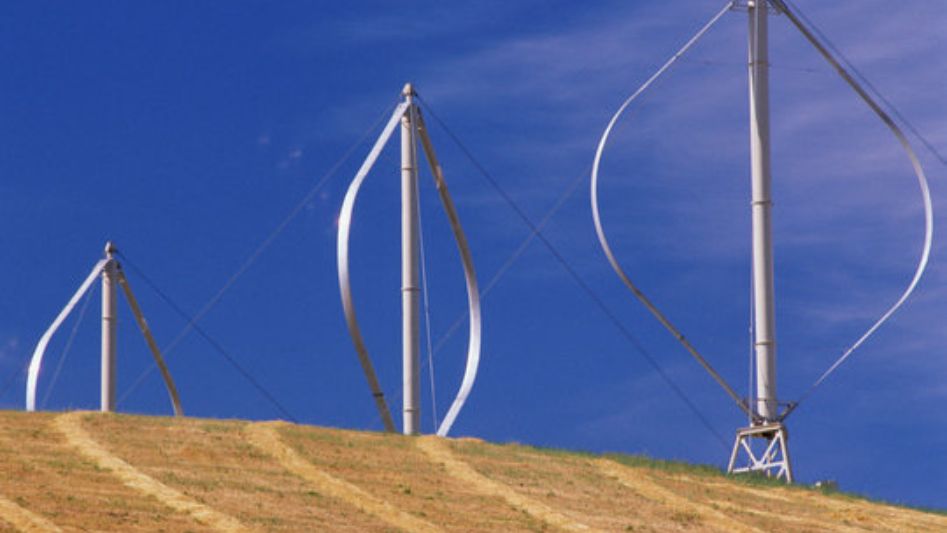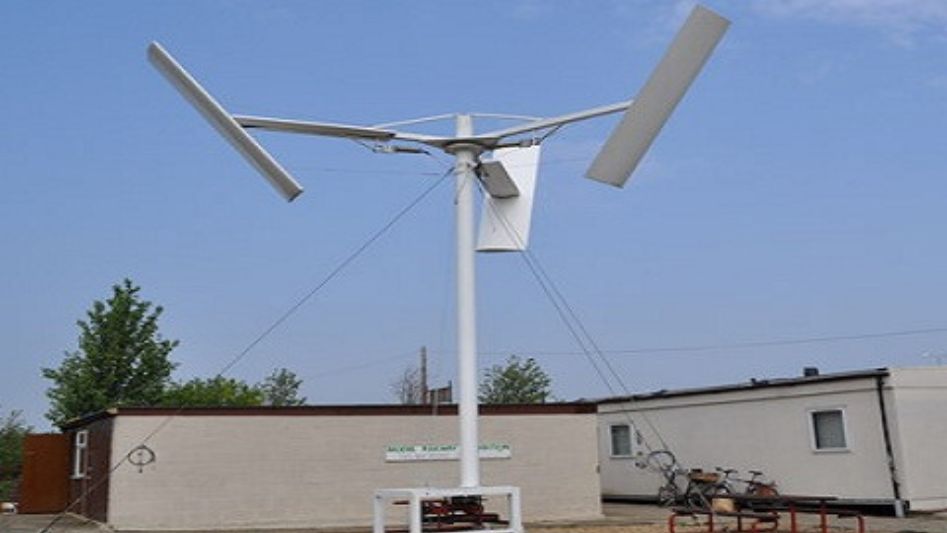Swept Area and Rated Power are two of the key parameters to power transmission lines. The power output of a wind turbine is directly related to the area swept by the blades.
Table Of Content
- Introduction
- Rated Output
- Wind Turbine Output Adjustment
- Conclusion
- FAQ
- You May Also Like
- External Links
Introduction
The total area covered by a wind turbine’s rotor blades has a direct bearing on the amount of electricity the machine generates. If the diameter of its blades is increased, then the amount of power that can be extracted from the wind will also increase.

Now that we have that out of the way, let’s talk about the fundamental facts of wind power and what they imply for you. Although some of these elements have been discussed before, we will look at them together from now on.
Rotor Diameter. On the majority of wind turbine spec sheets, this number may be found. There’s nothing more complicated than the diameter that the blades cover.
Swept area. This refers to the total area of the rotor measured in square feet. Another name for this region is the “catch area.”
pi x Radius² = Area Swept by the Blades.
The wind’s energy does not behave in a linear fashion. When the wind speed is doubled, the energy produced is increased not by a factor of two but by a factor of eight. The power is enhanced by a factor of three for every one unit that the speed rises by.
Determine the power generated by the wind at 10 mph and 20 mph.
10 x 10 x 10 = 1,000
20 x 20 x 20 = 8,000
The rotor only collects energy in a linear fashion. If you double the area that is being swept, you will effectively double the quantity of energy that can be collected. This indicates that if we want to compare turbines that are comparable, we need to apply the formula to determine the swept area when the rotor diameter is varied from one turbine to the next. Let’s find out what happens to the swept area if we increase the rotor diameter by a factor of two.
Compare the rotor diameters of a 10 foot and a 20 foot model.
10 feet in diameter is equal to 5 feet in radius.
The diameter of 20 feet is equal to the radius of 10 feet.
Putting the formula into use
pi x Radius²
3.14 x 25 = 78.5 square feet
3.14 x 100 = 314 square feet.
The rotor diameter was raised by a factor of two, while the swept area went up by a factor of four.
Let’s have a look at how much of a difference it makes when the rotor diameter is increased by only one foot. Determine the difference in circumference between a 9-foot and a 10-foot diameter.
pi x Radius² = swept area by the Blades
9 foot Diameter
3.14 x 20.25 = 63.6 Square Feet
10 foot Diameter
3.14 x 25 = 78.5 Square Feet
Increasing the diameter by one foot results in a 23% larger swept area.Getting energy from the wind is the primary purpose of a wind turbine, and the most frequent method for doing so is to expand the collecting area. Now that we have a starting point, we may look at machines that are similar to one another.
Rated Output
In the specifications of a unit, you may likely come across the following terminology in relation to power production:
Start-up Speed. The pace at which the rotor begins to revolve after it has been stopped. This figure is irrelevant with regard to the generation of electricity.
Reduce Your Speed. The rotational velocity at which the turbine begins to generate electricity. The sole drawback of having a low cut-in speed is that there is very little power produced when the wind speed is low. If a turbine is advertised as having a low cut-in speed, there is absolutely no reason to be enthusiastic about it.
Power as Measured. At a wind turbine’s rated wind speed, also known as the governing speed, this is normally the amount of power that is being generated.
The power rating of a wind turbine is one of the features of a wind turbine that is likely to be misinterpreted and overstated more often than any other. The rated output, also known as rated power, is the highest amount of work or power that the turbine is capable of producing. The power output could be more or it might be lower than the figure that’s been given.
There are many different variables that might lead to variations in the amount of electricity that is produced. One is the gravitational pull of the atmosphere. Consider the atmosphere in light of the water around it. Because its molecules are more closely packed together, water has a higher density than air.
Anyone who has ever stood in the middle of a river has experienced the force that is contained in the movement of the water. When there is a strong stream, it might be exceedingly difficult, if not impossible, to stand. It is important to keep in mind that the speed of a water stream that is powerful enough to exert a significant amount of force on your body may be measured in several miles per hour. When you are in a current that is moving at ten miles per hour, you will feel the force of the water pushing on your body. You could see that your clothing is becoming ruffled if the wind is blowing at 10 miles per hour, but there is no perceptible physical force that is attempting to move your body.
The density of the air is greatest at sea level, and it decreases with increasing height. The same may be said for the temperature. A cooler temperature equals denser air. When the air is denser, there are more molecules in it, and when there are more molecules in the air, there is a greater amount of force exerted on the blades.

If the average wind speed remains the same throughout the year, the wind turbine should generate more electricity in the winter than it does during the summer. On the other hand, the reverse is also true. The amount of energy produced will grow in proportion to either the temperature or the height. It is very likely that a turbine’s output will be shown for an average day at sea level and 68 degrees Fahrenheit.
Wind Turbine Output Adjustment
The output correction for altitude is in feet above sea level, rounded to the nearest foot.
0——————100%
2500————-91%
5000————-83%
7500————-76%
Unless you relocate to a new area, you won’t have any influence on the altitude or the temperature. Both of these factors are out of your control. It is important to be aware of the fact that a turbine’s power generation is not going to meet the manufacturing requirements when it is located at a high altitude during the summer.
Up to this point, we have discussed the factors that have an effect on the maximum rated power. The second factor that contributes to the misconception over output rating is essentially simply a misunderstanding of how a turbine goes about its day-to-day work. When the wind begins to blow, the turbine doesn’t immediately turn on and begin generating the rated output like an engine-driven generator does. Instead, it takes some time for the turbine to reach that point. It generates increasing amounts of power in proportion to the amount of energy that is available in the wind and the amount of swept area that the rotor has available to gather that energy. Low wind means a decrease in productivity. When the wind speed is strong, productivity is high.
Let’s look at a common power chart so we can get a better idea of how much power a standard turbine could make at different wind speeds.
The Power Profile, which is also known as the Instantaneous Power chart, is an excellent visual reference that enables one to observe the production in watts in relation to the wind speed. At the bottom of the chart, there is not much activity taking place. Even at speeds between 12 and 15 miles per hour, what may seem like a pleasant wind produces a rather small amount of force. It is clear to see that a wind speed that is rather high is required in order to create anything that comes close to the reported rated output, which is something that we may easily get focused on.
Energy production output measured on a monthly or yearly basis is something that is more useful to the user. The difference between a steady wind speed and the average wind speed may have a significant impact on the total amount of output. The low wind speeds provide far less power to the overall average, while the higher wind speeds do contribute significantly more power. Because the amount of energy carried by a greater wind is proportional to its cube, even modest increases may result in significant gains in power. It is possible to think of it as a weighted average. If a monthly estimate of power production is calculated by multiplying the power generated at a specific wind speed from an instantaneous power chart by the number of hours in the month, it may be understated by up to 100%.
Conclusion
As you can see, the rated power that is often associated with wind turbines is not very informative. It’s important to note that the wind speed at which the rated power is obtained differs from model to model, adding yet another layer of complexity to the buying process.
After seeing the instantaneous power graph, you may safely disregard the other two variables, start-up speed and cut-in speed. It doesn’t matter too much if the initial speed is just six miles per hour. At low speeds, there is just no power that can be considered important.
FAQ
What exactly does “swept area” mean?
When the blades are moving through the air, they generate a circle that has a certain area that is referred to as the swept area. Use the same method to locate the region that was swept. The equation that you would use to determine the area of a circle may be determined by following the steps in the following paragraph.

What does it mean for a turbine to have a certain swept area?
When seen from right in front of the rotor blades’ centers, a wind turbine’s swept area is the region that can be seen to be traversed by the rotor blades as they rotate. The swept area of the blades of a wind turbine has a direct bearing on the amount of power that the turbine generates.
How do you calculate the swept area?
The swept area of the rotor is measured in square feet and is referred to as the “swept area.” Another name for this region is the “catch area.” pi multiplied by the square of the radius results in the area covered by the blades.
You May Also Like
- Vertical Axis Wind Turbines Will Dominate The Floating Offshore Wind Market
- Can A Small Wind Turbine Power A House?
- What Is A Vertical Axis Wind Turbine (VAWT)?
- Vertical Axis Wind Turbines. Can They Work Together?
- Vertical Axis Wind Turbine in Urban Applications

